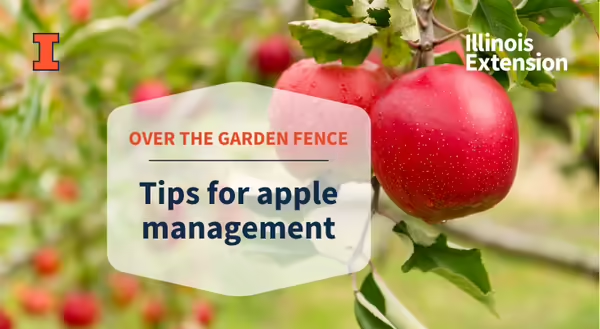
Last week, I wrote about what I feel is the most damaging fungal disease for apples and flowering crabapples – apple scab. These treatments may seem like a lot of work, but control measures for apple scab also will help with other diseases and pests.
Cedar apple rust
Cedar apple rust (CAR) vacations on cedar and juniper evergreens from late summer through the winter and travels back to apples and crabs during the same weather as apple scab, cool and wet. That sneaky foliar fungal disease is out there right now waiting for the right weather conditions and stage of development of our crabapples and apples. When it comes to CAR (apple scab), preventing the infection and spread is up to us, the gardener. Spray treatments need to start when the apple and crabapple buds are just swelling, and we can see the very tiniest amount of green tissue showing. Protection is name of game with this disease.
Fungus on apple fruit
There are two superficial diseases that also go together – sooty blotch and flyspeck. These appear on the surface of the fruit skin and go no further. They will show up mid to late summer, so if cover sprays are being applied, these two diseases are taken care of.
Fruit insects on apples
The two main insects of concern on fruiting apples are codling moth and apple maggot. Codling moth is the proverbial worm in the apple. The female moth lays an egg on the calyx end of the apple where the hatching worm then invades and travels and eats into the center area. You do not notice until the apple is cut open or that first bite is taken. Apple maggot is easily spotted as the female fly lays a number of eggs. Hatching maggots tunnel into the meat causing a lumpy looking fruit. Multipurpose fruit tree sprays include both fungicides and insecticides so they will prevent damage if cover sprays are appropriately applied.
Remember, always read and follow label indications and instructions.
Interested in more on apple trees? Check out the 2021 fruit tree blog series.
Want to know when new topics post here? Subscribe to Over the Garden Fence emails.
About the author: Richard Hentschel’s expertise extends across several subject areas with specialties in lawn care, fruit tree production, woody ornamentals, and home and community gardening. During his 45-year career in horticulture and agriculture, Hentschel became a well-known and respected expert for commercial and homeowner audiences, industry organizations, and media. He retired from University of Illinois Extension in April 2022 with nearly 30 years of service as a Horticulture Specialist and Educator in northern Illinois.